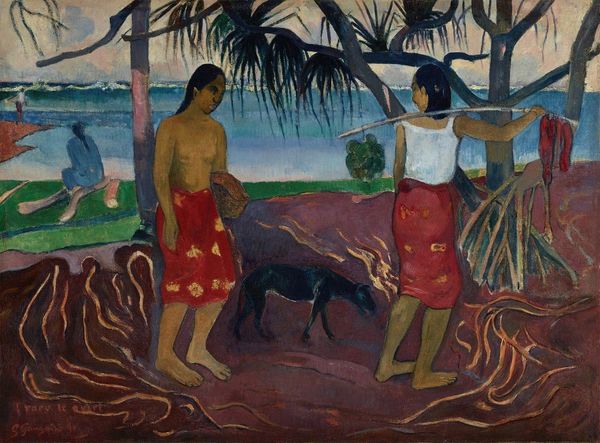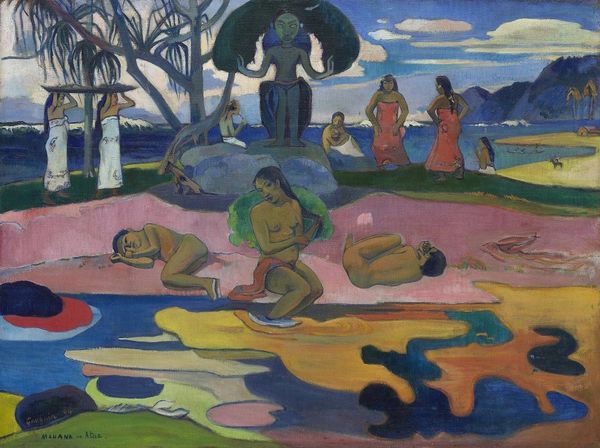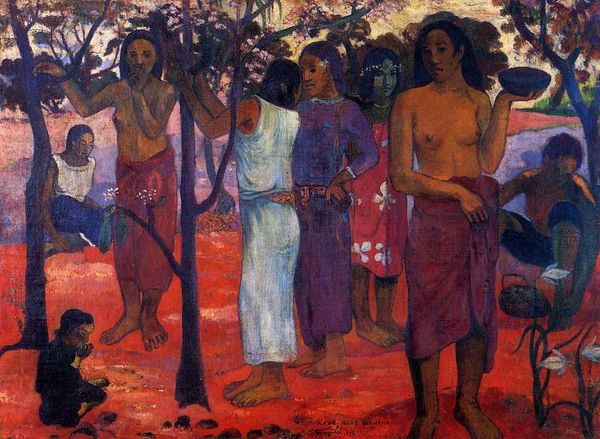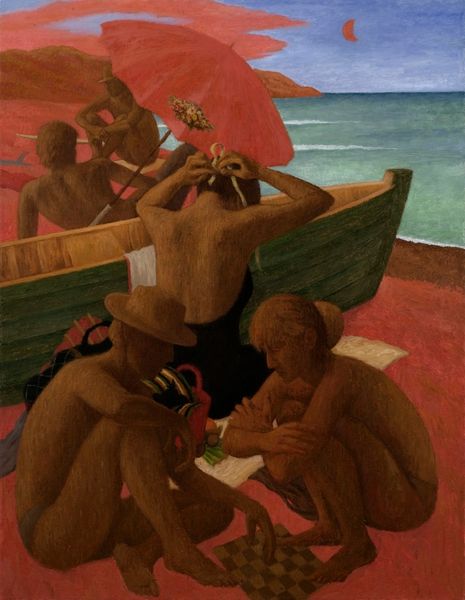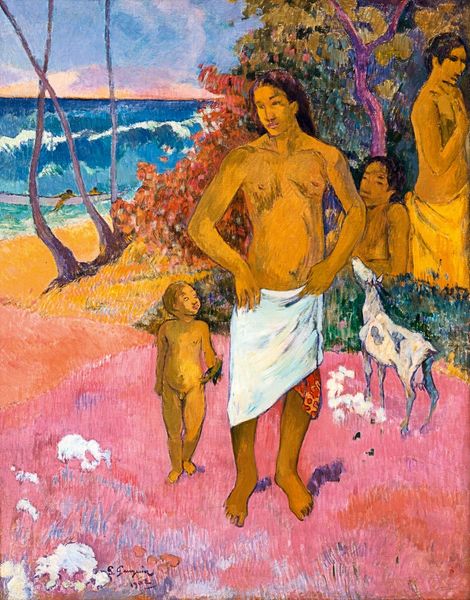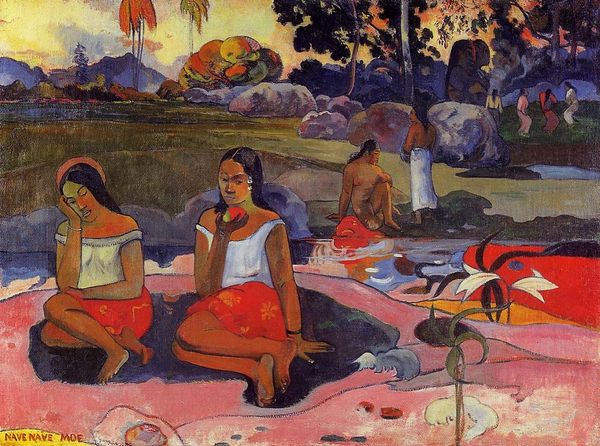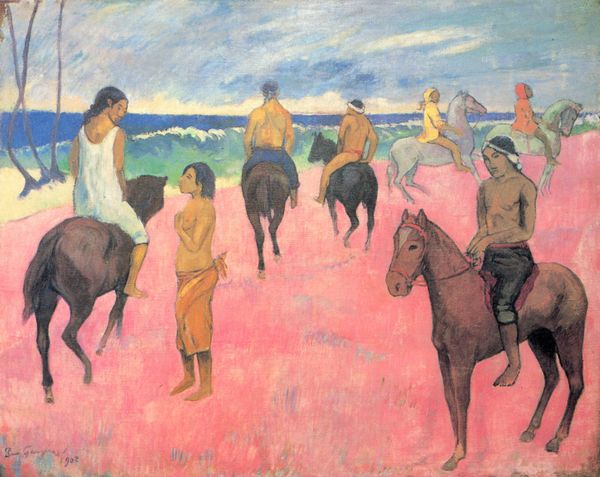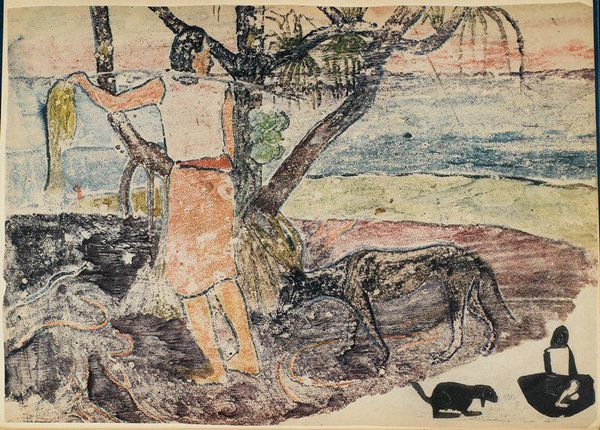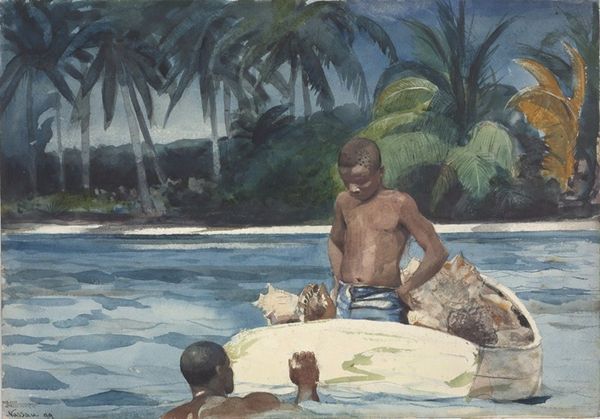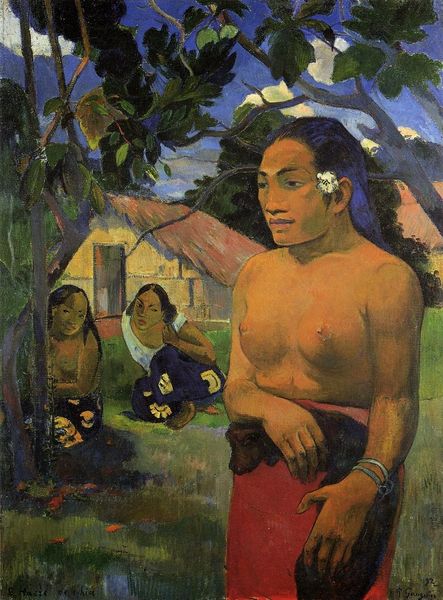
Dimensions: 28 3/4 x 36 in. (73.03 x 91.44 cm) (canvas)38 × 45 1/16 × 3 1/8 in. (96.52 × 114.46 × 7.94 cm) (outer frame)
Copyright: Public Domain
Editor: This is Paul Gauguin's "I Raro Te Oviri (Under the Pandanus)," painted in 1891. The colours feel so vibrant and unnatural. What’s your interpretation of this work? Curator: Gauguin's choice of those colours needs to be understood in relation to the colonial context in which the work was created. The seemingly exotic palette, along with the depiction of Tahitian women, reinforces the Western fantasy of a 'primitive' paradise. Do you think this fantasy contributes to the viewer's experience? Editor: Definitely. The vibrant colors and figures create an idealized version of Tahiti, far removed from reality. Is that what you mean by the politics of imagery? Curator: Precisely. The painting, now hanging in the Minneapolis Institute of Art, also participates in a broader institutional practice of showcasing non-Western cultures for Western audiences, shaping perceptions and perpetuating certain narratives. Do you notice any visual clues reinforcing those perceptions? Editor: Perhaps the women's attire? They're dressed in a way that emphasizes a kind of carefree, 'natural' existence, like props almost. Curator: Precisely. Consider, too, how the 'naive art' style reinforces the idea of a culture untouched by Western influence. These choices weren't accidental. Gauguin strategically used stylistic devices to construct an image, contributing to a very specific, romanticized vision. Editor: It’s eye-opening to consider how art can perpetuate specific power dynamics and impact a broader socio-cultural understanding. I didn't think about it in this context. Curator: Thinking about it this way, what does this painting say about the politics embedded in displaying such imagery in prominent Western art institutions like the Minneapolis Institute of Art?
Comments
Join the conversation
Join millions of artists and users on Artera today and experience the ultimate creative platform.
